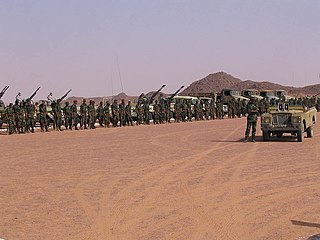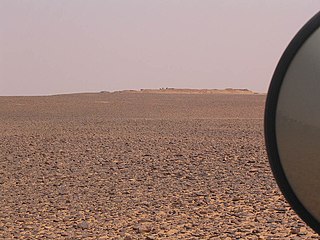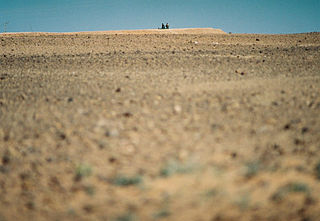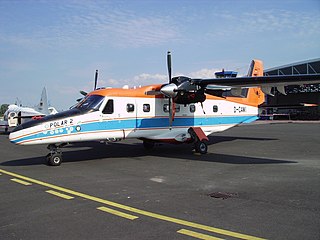 W
WThe Western Sahara conflict is an ongoing conflict between the Polisario Front and the Kingdom of Morocco. The conflict originated from an insurgency by the Polisario Front against Spanish colonial forces from 1973 to 1975 and the subsequent Western Sahara War against Morocco between 1975 and 1991. Today the conflict is dominated by unarmed civil campaigns of the Polisario Front and their self-proclaimed SADR state to gain fully recognized independence for Western Sahara.
 W
WOperation Rattle, also known as the 1991 Tifariti offensive, was the last military operation in the Western Sahara War by the Royal Moroccan Army against the Polisario Front, seeking independence for Western Sahara. A ceasefire had been agreed between the parts on July. During August and the first days of September 1991, the Royal Moroccan Army (RMA) conducted offensive operations in the areas of Mehaires, Tifariti, Bir Lahlou, Mijek and Agwanit, resulting in multiple Sahrawi civilian casualties, the destruction of Tifariti and Bir Lahlou, poisoning of the wells and subsequently depopulation of the area.
 W
WThe Gdeim Izik protest camp was a protest camp in Western Sahara, established on 9 October 2010 and lasting into November that year, with related incidents occurring in the aftermath of its dismantlement on 8 November. The primary focus of the protests was against "ongoing discrimination, poverty and human rights abuses against local citizens".
 W
WThe 2011 Western Saharan protests began on 25 February 2011 as a reaction to the failure of police to prevent anti-Sahrawi looting in the city of Dakhla, Western Sahara, and blossomed into protests across the territory. They were related to the Gdeim Izik protest camp in Western Sahara established the previous fall, which had resulted in violence between Sahrawi activists and Moroccan security forces and supporters. The protests also purportedly drew inspiration from the Arab Spring and successful revolts in Tunisia and Egypt, though according to some commentators, the Arab Spring proper did not reach Western Sahara.
 W
WThe Battle of Al Mahbes was fought on 14 October 1979 during the war in Western Sahara. The Polisario Front annihilated a battalion of the Royal Moroccan Armed Forces.
 W
WThe Battle of Mahbes was fought on 12 January 1985 during the Western Sahara War. As part of its Grand-Maghreb offensive, the Polisario Front, with heavy means, breaks through the wall of sand defended by the Royal Moroccan armed forces.
 W
WThe First Battle of Amgala was fought between 27–29 January 1976 around the oasis of Amgala, Western Sahara, about 260 kilometres (160 mi) west of the border with Algeria. Units from the Algerian Army were attacked by units from the Royal Moroccan Armed Forces on the night of 27 January. The Algerians withdrew after fighting for 36 hours. However, the retaliation came fairly soon, between 13th and 15th february 1976 Polisario units defeated Moroccan troops in the second Amgala battle.
 W
WThe Second Battle of Amgala, also called Amgala II or Amgala 2, took place on 14 February 1976 in the Amgala Oasis in Western Sahara. It pitted the Moroccan troops, who lost Amgala, to the forces of the Sahrawi People's Liberation Army, the armed wing of the Polisario Front, supported by the Algerian army. According to Maurice Barbier, the Moroccan garrison in the city was entirely decimated.
 W
WThe Free Zone or Liberated Territories is a term used by the Polisario Front government of the Sahrawi Arab Democratic Republic, a partially recognized de facto sovereign state in the western Maghreb, to describe the part of Western Sahara that lies to the east of a 2,200-kilometre (1,400 mi) border wall flanked by a minefield, often referred as the Berm, and to the west and north of the borders with Algeria and Mauritania, respectively. It is controlled by the Sahrawi Arab Democratic Republic, as opposed to the area to the west of the Berm, which is controlled by Morocco as part of its Southern Provinces. Both states claim the entirety of Western Sahara as their territory.
 W
WFront Polisario Khat al-Shahid is a minor faction within the Front Polisario. It is based in the Sahrawi refugee camps of Tindouf, Algeria, but also claims to have supporters and members in the Sahrawi diaspora in Mauritania, Morocco, Spain, France and various European countries, as well as in the Moroccan-controlled part of Western Sahara.
 W
WThe Green March was a strategic mass demonstration in November 1975, coordinated by the Moroccan government, to force Spain to hand over the disputed, autonomous semi-metropolitan province of Spanish Sahara to Morocco. The demonstration of some 350,000 Moroccans advanced several kilometres into the Western Sahara territory, escorted by nearly 20,000 Moroccan troops, and meeting very little response from the Sahrawi Polisario Front. Nevertheless, the events quickly escalated into a fully waged war between Morocco and the militias of the Polisario, the Western Sahara War, which would last for 16 years. Morocco later gained control over most of the former Spanish Sahara, which it continues to hold.
 W
WWestern Sahara, formerly the Spanish colony of Spanish Sahara, is a disputed territory claimed by both the Kingdom of Morocco and the Popular Front for the Liberation of the Saguia el Hamra and Rio de Oro, which is an independence movement based in Algeria. It is listed by the United Nations (UN) as a non-decolonized territory and is thus included in the United Nations list of Non-Self-Governing Territories.
 W
W W
WThe Army of Liberation was an organization of various loosely united militias fighting for the independence of Morocco from the French-Spanish coalition.
 W
WMoroccan settlers refers to citizens of the Kingdom of Morocco of various ethnicities that have settled in Western Sahara. Following the 1975 Green March, on the course of Western Sahara conflict, the Moroccan state has sponsored settlement schemes enticing thousands of Moroccans to move into the Moroccan-occupied part of Western Sahara. By 2015, it was estimated that Moroccan settlers made up at least two thirds of the 500,000 inhabitants in the Western Sahara region.
 W
WThe Moroccan Western Sahara Wall is an approximately 2,700 km (1,700 mi) long structure, mostly a sand wall, running through Western Sahara and the southwestern portion of Morocco. It separates the Moroccan areas on the west from the Polisario-controlled areas on the east.
 W
WPolar 3 was a Dornier Do 228 owned and operated by the Alfred Wegener Institute that was shot down south of Dakhla, Western Sahara by guerrillas of the Polisario Front on 24 February 1985.
 W
WThe Polisario Front, Frente Polisario, FRELISARIO or simply POLISARIO, from the Spanish abbreviation of Frente Popular de Liberación de Saguía el Hamra y Río de Oro, is a Sahrawi rebel national liberation movement aiming to end Moroccan presence in the Western Sahara. It is a consultative member of the Socialist International. The United Nations considers the Polisario Front to be the legitimate representative of the Sahrawi people and maintains that the Sahrawis have a right to self-determination. The Polisario Front is outlawed in the parts of Western Sahara under Moroccan control, and it is illegal to raise its party flag there.
 W
WThe Sahrawi National Union Party, or Partido de Unión Nacional Saharaui (PUNS), was a short-lived political party set up by Francoist Spain to rally indigenous support in its rebellious Spanish Sahara colony.
 W
WSahrawi nationality law is the law of the Sahrawi Arab Democratic Republic (SADR) governing nationality and citizenship. SADR is a partially recognized state which claims sovereignty over the entire territory of Western Sahara, but only administers part of that territory.
 W
WThe Settlement Plan was an agreement between the ethnically Saharawi Polisario Front and Morocco on the organization of a referendum, which would constitute an expression of self-determination for the people of Western Sahara, leading either to full independence, or integration with the Kingdom of Morocco. It resulted in a cease-fire which remains effective to this day, and the establishment of the MINURSO peace force to oversee it and to organize the referendum. The referendum never occurred.
 W
WThe Western Sahara War was an armed struggle opposing the Sahrawi indigenous Polisario Front to Morocco between 1975 and 1991 and Mauritania from 1975 to 1979, being the most significant phase of the Western Sahara conflict. The conflict erupted after the withdrawal of Spain from the Spanish Sahara in accordance with the Madrid Accords, by which it transferred administrative control of the territory to Morocco and Mauritania, but not sovereignty. In late 1975, the Moroccan government organized the Green March of some 350,000 Moroccan citizens, escorted by around 20,000 troops, who entered Western Sahara, trying to establish a Moroccan presence. While at first met with just minor resistance by the POLISARIO, Morocco later engaged a long period of guerrilla warfare with the Sahrawi nationalists. During the late 1970s, the Polisario Front, desiring to establish an independent state in the territory, attempted to fight both Mauritania and Morocco. In 1979, Mauritania withdrew from the conflict after signing a peace treaty with the POLISARIO. The war continued in low intensity throughout the 1980s, though Morocco made several attempts to take the upper hand in 1989–1991. A cease-fire agreement was finally reached between the Polisario Front and Morocco in September 1991. Some sources put the final death toll between 10,000 and 20,000 people.
 W
WThe Zemla Intifada is the name used to refer to disturbances of June 17, 1970, which culminated in a massacre by Spanish Legion forces in the Zemla district of El Aaiun, Spanish Sahara.